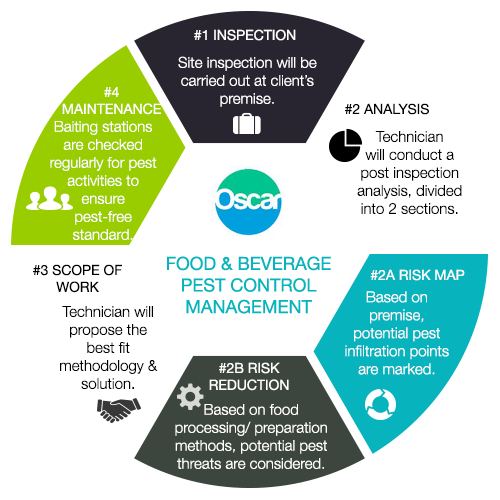Rodent-Proofing Your Outdoor Space: Techniques For A Pest-Free Yard
Rodent-Proofing Your Outdoor Space: Techniques For A Pest-Free Yard
Blog Article
Short Article Produced By-Donahue Cormier
Did you understand that rats can press through openings as little as a quarter? Think of the implications for your exterior space. From munching on plants to nesting in relaxing edges, these pests can wreak havoc if provided the possibility. But fear not, there are useful strategies you can employ to maintain your yard rodent-free. By taking easy steps to secure entry factors and keep a neat environment, you can produce a citadel versus unwanted hairy site visitors. So, are you all set to guard your outdoor sanctuary from these pesky trespassers?
Identify Entry Things
To successfully rodent-proof your outdoor area, start by pinpointing possible entrance factors. Examine your backyard for any kind of voids or openings that rodents might make use of to get. Examine locations such as voids under doors, holes in the walls, or openings around utility infiltrations. Remember that computer mice can squeeze through openings as tiny as a dime, so be complete in your examination.
Focus on locations where energies enter your home, such as where pipes, cords, or wires enter the building. Seal any kind of voids around these entry factors with materials like steel wool or caulk. In addition, look for any type of cracks in the foundation or spaces in the exterior siding that might work as access factors for rodents.
Pay very close attention to locations where vegetation meets your home, as disordered plants can offer concealing places and simple access for rodents. Trim any type of looming branches or shrubs that could be used as bridges to your home. By determining and sealing these entrance points, you can dramatically minimize the possibilities of rodents attacking your outside space.
Implement Exemption Procedures
Evaluating and sealing access points is the primary step in rodent-proofing your exterior room; now you'll do something about it by executing exemption measures.
Start by installing door sweeps on all exterior doors to prevent rats from squeezing via voids. Seal cracks and gaps with weather-resistant sealer, focusing on locations where energy pipes enter your home.
Use cord mesh to cover vents and chimneys, ensuring they're securely affixed. Cut tree branches and greenery away from your home to remove prospective bridges for rodents to access your roofing.
Furthermore, think about installing https://how-to-remove-raccoons-fr39505.myparisblog.com/27558676/observe-the-conflict-in-between-an-age-old-structure-and-a-sneaky-termite-hazard-as-professionals-reveal-advanced-strategies-to-safeguard-its-heritage blinking around the base of your home to stop burrowing. Store fire wood at the very least 18 inches off the ground and away from your residence.
Keep waste in firmly sealed containers, and without delay tidy up any kind of splashed birdseed or animal food. By implementing https://whodoyoucalltoremoveasnak40628.develop-blog.com/33057898/puzzling-termites-might-be-unleashing-peaceful-turmoil-in-your-abode-discover-the-inconspicuous-indications-before-it-s-too-late , you can dramatically lower the likelihood of rodents attacking your outdoor area.
Maintain Cleanliness and Trimmed Landscaping
Guarantee your outside space continues to be tidy and your landscaping is regularly trimmed to prevent rats from discovering harborage or food resources. Maintaining your backyard tidy is essential to lessening attractions for rodents. Eliminate any debris, clutter, or unused items that can act as hiding spots for these insects. visit the following post are drawn to areas with simple accessibility to food and shelter, so by keeping sanitation, you make your residential property less enticing to them.
Frequently cutting your landscaping is also vital in rodent-proofing your exterior area. Overgrown vegetation supplies rodents with adequate hiding spots and prospective nesting sites. By keeping your grass trimmed, shrubs cut, and trees trimmed, you get rid of potential environments for rodents. In addition, trimmed landscaping makes it harder for rodents to access your home as they choose areas with sufficient insurance coverage for defense.
Conclusion
In conclusion, by putting in the time to rodent-proof your exterior area, you can guarantee a pest-free backyard for years to come. Keep in mind to routinely inspect for entry factors, apply exemption measures, and maintain your lawn clean and well-kept.
With these easy techniques in position, you can enjoy a calm and rodent-free outside environment. So, do not delay - begin rodent-proofing today and bid farewell to undesirable pests in your backyard!
